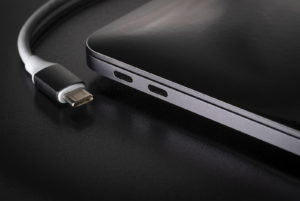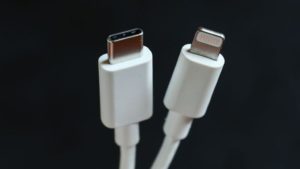
The European Union has recently adopted a law that requires all mobile phones, tablets, and cameras sold in the EU to be equipped with a USB Type-C charging port by the end of 2024. This law extends to laptops starting in spring 2026. The goal of this new law is to reduce e-waste and empower consumers to make more sustainable choices.
Under this new rule, all rechargeable portable electronic devices operating with a power delivery of up to 100 Watts, including but not limited to mobile phones, tablets, digital cameras, headphones and headsets, handheld videogame consoles, portable speakers, e-readers, keyboards, mice, portable navigation systems, and earbuds, must have a USB Type-C port. This means that consumers will no longer need to purchase a new charger every time they buy a new device, as they can now use one single charger for a variety of devices. Additionally, all devices that support fast charging will have the same charging speed, allowing users to charge their devices at the same speed with any compatible charger.
The EU has also recently implemented a directive that requires device makers to use a common charger for all products in order to reduce the environmental impact of consumer electronics purchases. This directive is expected to save buyers up to €250 million a year on unnecessary charger purchases. Furthermore, labels will be applied to devices to inform consumers about the charging characteristics, making it easier for them to determine if their existing chargers are compatible.
On the e-waste front, disposed of and unused chargers annually account for about 11,000 tonnes of e-waste in the EU. It is yet to be seen whether this directive will result in a decrease in e-waste or if it will lead to an increase in consumption. However, unused chargers that spend their lives untouched before being binned are a particularly sad kind of e-waste.
The Type-C charger is an incredibly versatile device, and its use will be widespread across Europe. It is capable of fast charging and can handle a variety of power sources. It has been designed to be compatible with a range of different devices and offers a much more efficient way to charge than the traditional Type-A USB charger.
What about Apple devices?
The European Union’s new mandate will pose a number of challenges for Apple, as their iPhones currently ship with a Lightning port that is not used by any other company. In an interview with The Wall Street Journal’s Joanna Stern, Apple marketing lead Greg Joswiak said that the company does not have a choice but to comply with the EU’s order. “Obviously we’ll have to comply; we have no choice,” Joswiak said.
In light of this new mandate, several reports suggest that the upcoming iPhone 15 Pro and Pro Max will use a Type-C port instead.

The EU is keen to promote the Type-C charger as a way to reduce the amount of unnecessary e-waste. By using a single charger across all devices, fewer chargers will be used and fewer will be thrown away. As well as this, with its fast charging capabilities, users will be able to charge their devices quickly and easily without having to wait for hours for the battery to reach full charge.
The EU has also taken into consideration the environmental impact of the move. By requiring all portable electronic devices to use Type-C, the EU is aiming to reduce energy consumption and emissions associated with the production of chargers. The Type-C charger is much more energy efficient than its Type-A counterpart, and by making the switch to the Type-C charger, the EU is hoping to reduce the amount of energy that is consumed in the production and use of chargers across Europe.
Ultimately, the EU’s decision to make all portable electronic devices use a USB Type-C charger by 2024 is a savvy one. Not only will it reduce e-waste, but it will also help reduce energy consumption. This move is likely to benefit both consumers and the environment, making it an all-around win for the EU.
